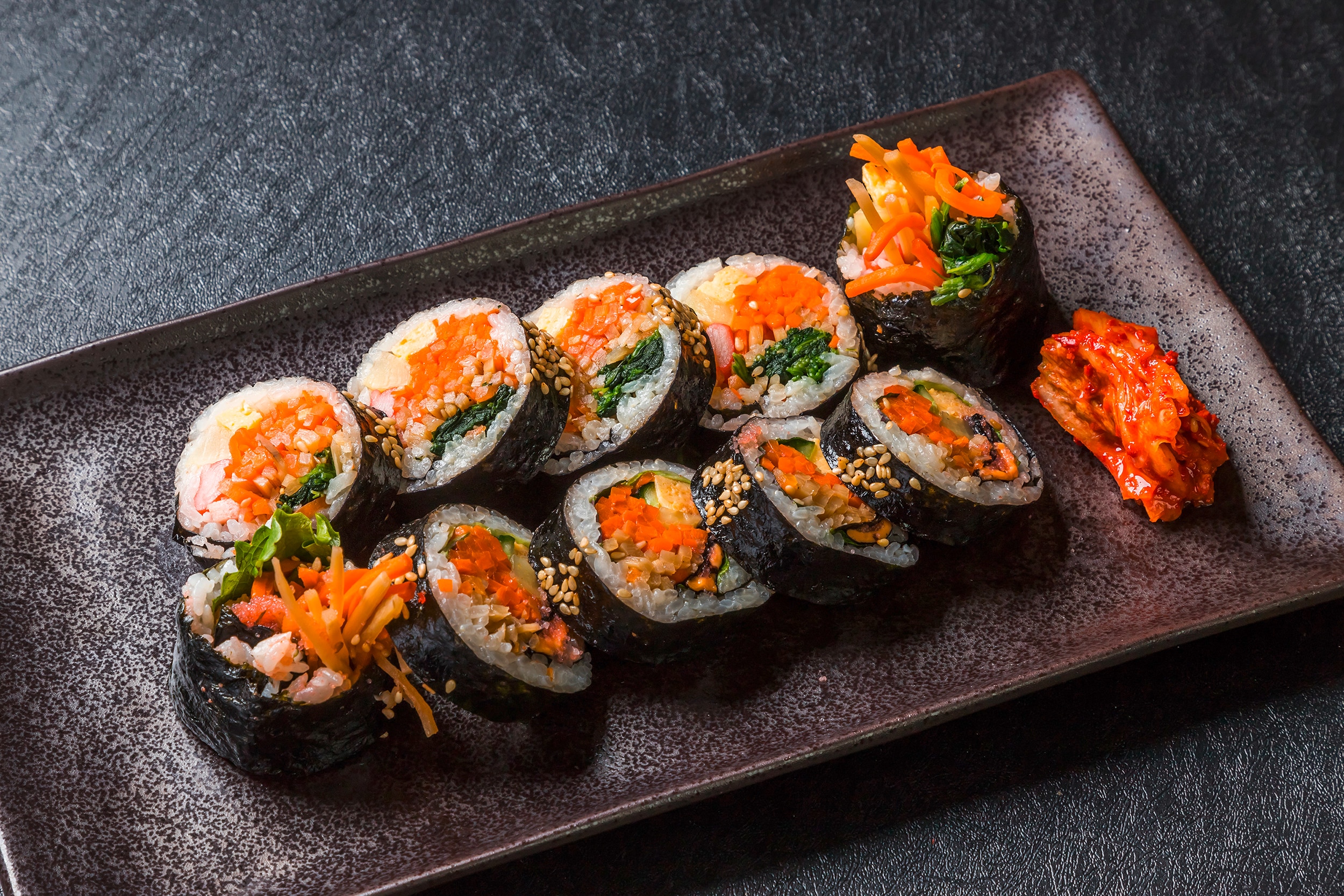Skip to:
South Koreans love their street food. And thanks to the rise of Korean pop culture (called the Hallyu wave), so does the rest of the world. Chances are you’ve drooled at the sight of Korean street food, such as tteokbokki, ramyun, and chimaek, just to name a few.
They’re drool-worthy for a reason: any street food from Korea is an exciting treat for your palate, typically offering a unique balance of textures and flavors in every bite. It’s no wonder many Filipinos have fully embraced having Korean food in their lives since it has many similarities to Pinoy cuisine. Think sweet, savory, and sour combinations, deep-fried crunch, and just a touch of heat.
With all these and more in common, Filipino and Korean food seem destined for a mash-up. Below, you’ll find a guide to some of the most popular Korean street food — plus tips on how to level them up at home with distinctly Pinoy flavors.
How to Add a Pinoy Twist to Korean Street Food
Korean fried chicken

Korean fried chicken is the perfect inuman food. It’s the “chi” in chimaek, which is shorthand for the classic chicken-and-beer combo. This chicken is juicy, often dripping in sauce, and double-fried to give it an addicting crispy exterior. It’s noticeably crunchier and much more flavorful than American-style fast-food fried chicken.
The most popular varieties of Korean fried chicken include the gochujang-based, sweet and spicy yangnyeom-chikin, and ganjang-chikin, which is made with garlic, soy sauce, and honey. Give this dish a Filipino flair by coating your chicken in an adobo-inspired sauce. Combine soy sauce, vinegar, garlic, and peppercorns in a saucepan and simmer until reduced to a thicker, syrupy consistency. Toss your fried chicken in the sauce, top with scallions, and you’re done! Enjoy your adobo-chikin.
Korean-style corn dogs

Corn dogs may have originated in the US, but Koreans have perfected the art form in kogo. Kogo is a variant of Korean-style corn dogs where the hotdog is enrobed in potato cubs. It’s deep-fried until golden brown, sprinkled with white sugar, and served with ketchup, mustard, and other condiments, like cheese sauce.
While kogo is delicious on its own, pairing it with a queso de bola dipping sauce would be the ultimate umami bomb. It’s easy: melt butter, milk, and shredded cheese together until you get an ooey-gooey texture akin to nacho cheese. Korean-style corn dogs with queso de bola sauce are bound to be a hit at your holiday parties.
Bungeoppang

On the sweeter side, you have bungeoppang: an iconic, fish-shaped Korean pastry stuffed with sweetened red bean paste. It’s served hot and fresh off the grill, so it’s among the best Korean street food for when the weather gets chilly. It’s similar to a waffle with a crispy exterior and a soft, fluffy interior.
You can try making bungeoppang with an ube halaya filling. The bright purple jam is a close match for red bean paste — smooth, creamy, and sweet with a rich, distinctive flavor.
Gimbap

Gimbap is often compared to sushi since it has the same components: “gim” for seaweed and “bap” for cooked rice. But instead of raw fish, gimbap is typically stuffed with a colorful mix of kimchi, pickled radish, egg strips, crab meat, odeng (or Korean fish cake), canned tuna, and other cooked or pre-prepared ingredients.
Some vendors stuff their gimbap with marinated beef like bulgogi, a Korean barbecue favorite. Since these rice rolls are endlessly customizable, why not fill them with Filipino ulam instead? Pinoy-style pork barbecue and atchara would taste great in this dish. Just slice the grilled pork into bite-sized pieces, layer them over the seaweed and rice, top with atchara for acidity and sweetness, and roll.
Jeon

It seems that every Asian country has their version of a savory pancake. In the Philippines, Korean jeon is most comparable to torta. But instead of an egg batter, jeon is typically made with flour, water, and doenjang, an ultra-savory fermented bean paste.
If doenjang is hard to source, no problem: you can use Knorr Shrimp Cubes to give your jeon the same deep, fish-like flavor. Simply dilute the cubes in hot water, mix into your batter, and add other seasonings to taste.
There are dozens of varieties of jeon, with the most popular being the scallion pancake or “pajeon.” Since the main ingredient in pajeon is sliced scallions, there’s plenty of room to innovate. You can throw in whatever veggies you have on hand, add minced shrimp and other seafood, and use leftover shanghai filling — it’s up to you. Don’t forget to serve your freshly fried and crispy jeon with a bright, vinegary sauce to cut through the oiliness.
Now, these are just some of Korean street food’s greatest hits. There are hundreds more you’re sure to enjoy, from spicy tteokbokki to buttery and filling gilgeori toast. Just like the dishes on this list, these other popular fares would be just as good with Pinoy flavors. So, give them a try! Be bold with your dishes, experiment with different ingredients, and don’t be afraid to add your spin to the classics. A whole new world of street food yumminess awaits.

